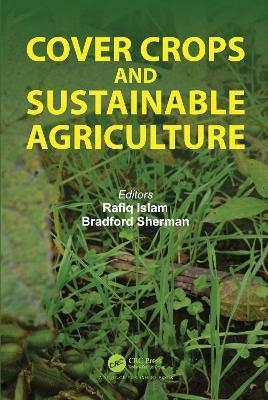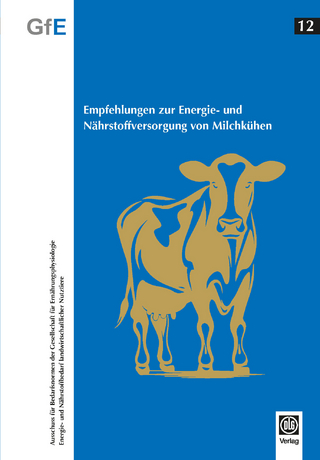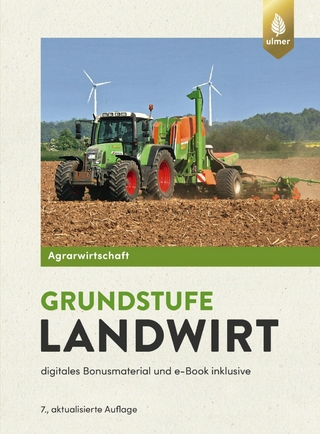
Cover Crops and Sustainable Agriculture
CRC Press (Verlag)
978-1-032-03443-0 (ISBN)
This book will not serve as the "encyclopedia of cover crop management," but it’s close. The benefits of a wide range of individual cover crops and blends/mixes for specific agronomic crop rotations and geographic locations are included. Descriptions, photographs, and illustrations show how cover crops look in the field, including plant height, leaf architecture, and rooting patterns. Long term benefits are described for soil health, soil structure, water quality, nutrient contributions, soil biodiversity, air quality and climate change.
In addition to the "whys" of cover crop use, the book includes details on the "hows:" how to choose cover crops for specific applications and locations; how (and when) to plant; how to manage and maintain the cover for maximum benefit; and how and when to terminate.
Planting options include: drilling/planting between rows of an agronomic crop at planting time, or when the crop is short (i.e. corn in early June); "aerial" seeding with an airplane or high-clearance machine shortly before the crop reaches maturity; and drilling/planting immediately after harvest of the agronomic crop. Selected cover crops (blends) can help with pest and disease management.
Cover crops are an economic input with an expected return on investment, similar to pesticides and fertilizer. As part of a continuous no-till system, cover crops provide long-term biological, chemical and structural benefits. The resulting increase in soil organic matter means the agronomic crop yields benefit from better water infiltration and water holding capacity, greater availability of nitrogen and other nutrients, deeper rooting, and increased soil microbial activity in the root zone.
Rafiq Islam is the Director of the Soil, Water, and Bioenergy Resources Program at The Ohio State University South Centers, Ohio, USA. He has over 30 years of academic and research experience on soil and water quality, cover crops, conservation tillage, marginal land, and biofeedstock production. Dr. Islam is a Fulbright teaching scholar and has published over100 journal articles; written several factsheets, manuals, and book chapters; and edited two books. Bradford Sherman is a publications editor with The Ohio State University, where his responsibilities include writing, editing, and the design of various publications within the College of Food, Agricultural, and Environmental Sciences (CFAES). With over 14 years of writing and editing experience; he handles the distribution of a CFAES newsletter; has edited books, journal articles, and Extension education materials for national and international audiences.
Introduction to Cover Crops. Benefits of Cover Crops on Agronomic Crop Yield. Potential and Challenges of Growing Cover Crops in Organic Production Systems. Cover Crops in Vegetable Production and Urban Farming in Sub-Saharan Countries. Algorithms to optimize cropping diversity with cover crops. Sustainable suppression of weeds through ecological use of cover crops. Cover crops for pests and soil-borne disease control and insect diversity. Cover Crops for Forages and Livestock Grazing. Cover crops’ effect on soil quality and soil health. Cover Crops for Orchard Soil Management. Cover Crop Mixes for Diversity, Carbon, and Conservation Agriculture. Cover crops and soil nitrogen cycling. Effect of Cover Crops on Soil Biology. Cover cropping improves soil quality and physical properties. Cover Crops Effects on Soil Erosion and Water Quality. Effects of cover crops on greenhouse gas emissions. Cover crops influence soil microbial and biochemical properties. Economics of Cover Crops.
| Erscheinungsdatum | 11.07.2023 |
|---|---|
| Zusatzinfo | 61 Tables, black and white; 5 Line drawings, color; 47 Line drawings, black and white; 4 Halftones, color; 22 Halftones, black and white; 9 Illustrations, color; 69 Illustrations, black and white |
| Verlagsort | London |
| Sprache | englisch |
| Maße | 178 x 254 mm |
| Gewicht | 700 g |
| Themenwelt | Weitere Fachgebiete ► Land- / Forstwirtschaft / Fischerei |
| ISBN-10 | 1-032-03443-2 / 1032034432 |
| ISBN-13 | 978-1-032-03443-0 / 9781032034430 |
| Zustand | Neuware |
| Informationen gemäß Produktsicherheitsverordnung (GPSR) | |
| Haben Sie eine Frage zum Produkt? |
aus dem Bereich


